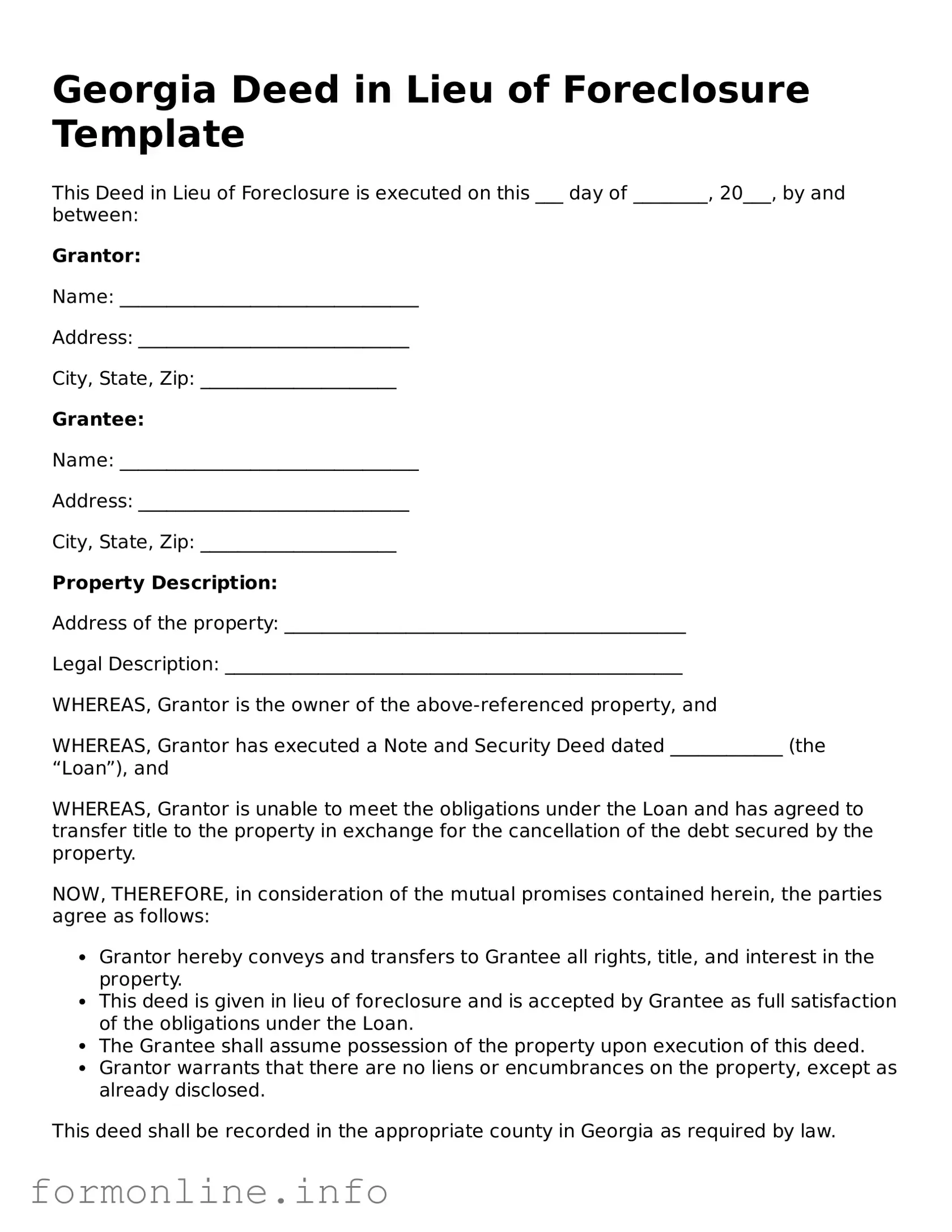Georgia General Warranty Deed
This General Warranty Deed is made this ___ day of __________, 20__, by and between:
Grantor: ____________________________________ (Name of Grantor)
Address: ____________________________________ (Address of Grantor)
and
Grantee: ____________________________________ (Name of Grantee)
Address: ____________________________________ (Address of Grantee)
For and in consideration of the sum of $___________________ (Amount), the Grantor does hereby grant, bargain, sell, and convey unto the Grantee the following described property situated in ______________ County, Georgia:
Property Description:
___________________________________________________________________________
___________________________________________________________________________
The Grantor warrants that the Grantor is lawfully seized in fee simple of the above-described property and that the property is free from all encumbrances except as noted herein. The Grantor covenants to defend the title against all claims and demands.
In witness whereof, the parties hereto have executed this Deed on the day and year first above written.
Grantor Signature: _______________________________
Grantor Printed Name: ___________________________
Date: _____________________________________________
Grantee Signature: _______________________________
Grantee Printed Name: ___________________________
Date: _____________________________________________
Signed, sealed, and delivered in the presence of:
- Witness Signature: _______________________________
- Witness Printed Name: ___________________________
This Deed must be recorded in the office of the Clerk of Superior Court of ______________ County.
Prepared by: ______________________________________ (Name of Preparer)
